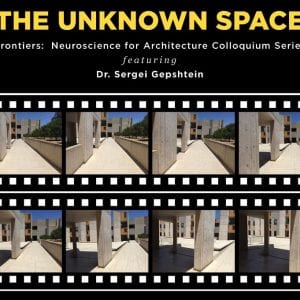For thousands of years around the world, the masonry tradition in architecture prevailed. Then in the 1920s, technologies emerged that gave us new ways of building with metal and glass. With this century’s advances in digital and scientific technology, we are discovering new ways of understanding design and architecture that could lead to a sea change in these fields.
Neuroscience, and what it can tell us about how people perceive and interact with design and architecture, is something we have been leading the conversation on for years. In November, we continued that dialogue with Dr. Sergei Gepshtein, who directs the Collaboratory for Adaptive Sensory Technologies at the Salk Institute for Biological Studies. A scientist working in the areas of perceptual psychology and sensory neuroscience, he is studying the intersection of architectural design, narrative design, and sensory neuroscience.
This field is so new that it’s a bit like solving a mathematical equation with multiple unknowns. You have to find a way to solve one of the unknowns so that you can get on with the work of the others. What I like about Sergei’s work is that he is as much in search of questions as he is in search of answers.
Many people share our interest in this work, which drew a strong local audience and an even larger audience online, including people around the world and PhD students working on dissertations. We are excited to be building a global community through our lecture series, Certificate for Neuroscience in Architecture, and our summer four-day executive course.
These are important opportunities for dialogue because one of the very real shifts in architecture has been toward evidence-based design and performative architecture. We have long believed that research into the mental state of the human being can change architecture, and that light, material, and space can affect people positively. This is at the heart of our human-centered approach.
Performative architecture makes us accountable when we make a claim, whether it is that adding skylights to a school will improve test scores or that window orientation in a hospital room will help patients discharge sooner. Neuroscience adds to the data we have that demonstrates our impact on the human experience.

 619-684-8800
619-684-8800
